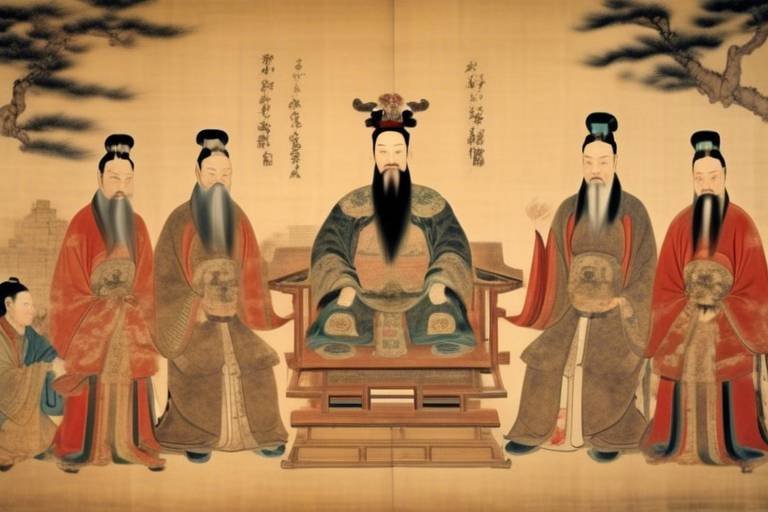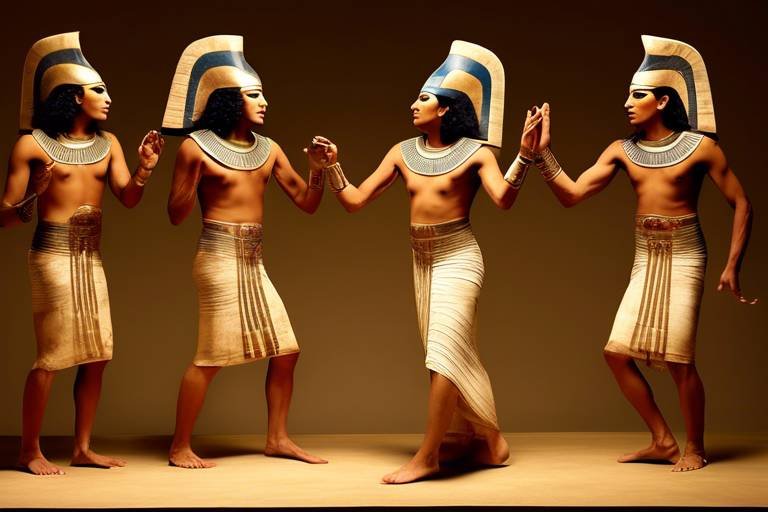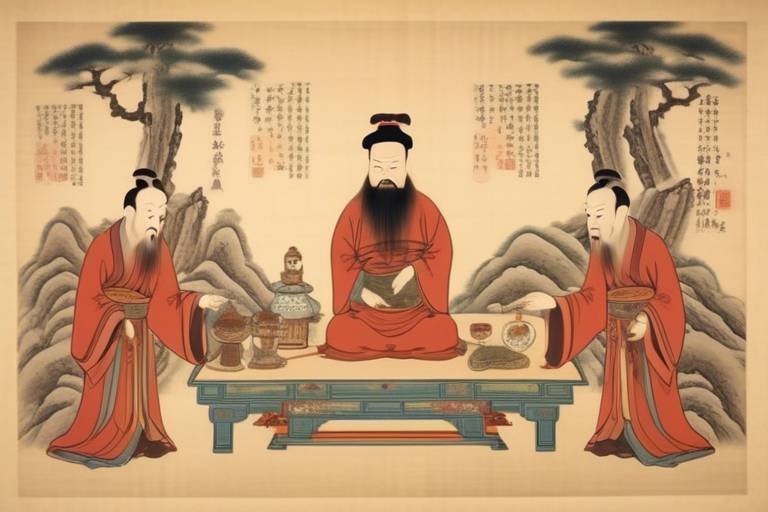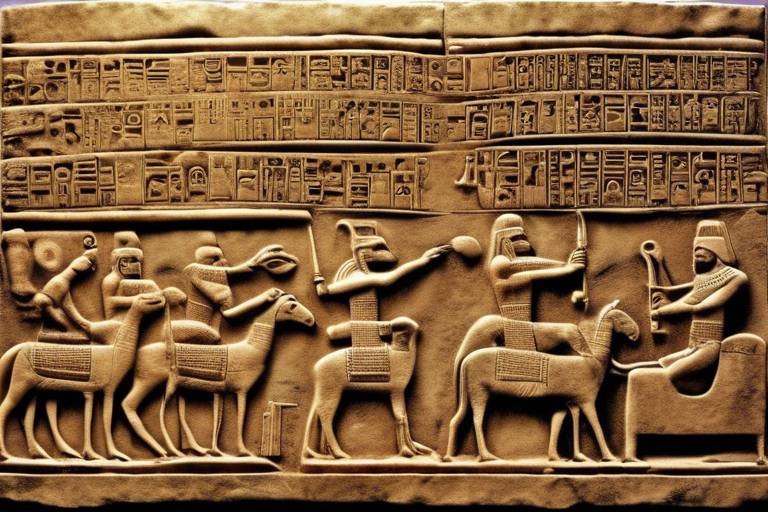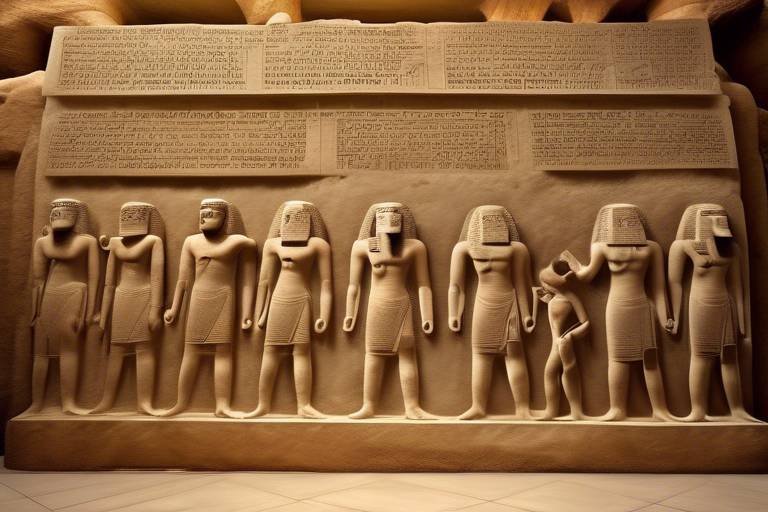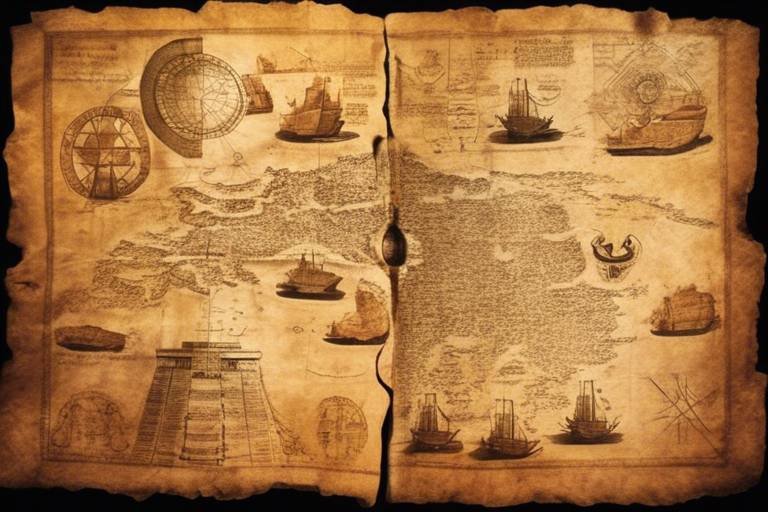The Mystery of the Ancient Picts
The Picts, an ancient civilization shrouded in mystery and intrigue, have captured the imagination of historians and archaeologists for centuries. Hailing from Scotland during the late Iron Age and early Medieval period, the Picts left behind a legacy of enigmatic artwork and symbols that continue to puzzle researchers to this day.
One of the most debated aspects of the Picts is their origins. Were they indigenous Celtic tribes or invaders from Scandinavia? The answer remains elusive, adding to the enigma surrounding this ancient people. Their integration into the rich tapestry of ancient Scottish society further complicates the narrative, painting a complex picture of a civilization with a unique cultural identity.
Central to the mystique of the Picts is their artistic expression. Their intricate symbols, found on symbol stones and elaborate carvings, speak a language of their own. Deciphering these symbols unlocks a portal to the past, offering glimpses into the beliefs and values of this enigmatic civilization.
The Picts' use of Ogham script, a form of writing characterized by linear strokes carved into stones, adds another layer of complexity to their culture. This ancient script served as a means of recording language and communication, providing valuable insights into the intellectual pursuits of the Picts.
Delving into the realm of warfare and society, we uncover the fierce reputation of the Picts as warriors. Their military tactics, social structures, and everyday life reveal a society marked by resilience and adaptability in the face of challenges.
Examining the defensive fortifications and hill forts constructed by the Picts sheds light on their strategic prowess and the importance they placed on safeguarding their territories. These structures stand as testaments to the ingenuity and resourcefulness of this ancient civilization.
Exploring the burial practices and funerary rituals of the Picts unveils a world of symbolism and belief in the afterlife. The intricate grave goods and symbolic artifacts buried alongside the deceased offer poignant reflections on the spiritual beliefs of the Picts.
As we trace the decline and disappearance of the Picts from historical records, we are left with more questions than answers. Theories abound, from assimilation with Gaelic-speaking populations to Viking invasions, each offering a glimpse into the possible fate of this enigmatic civilization.

Origins of the Picts
The origins of the Picts have long been shrouded in mystery and intrigue, sparking heated debates among historians and archaeologists alike. One prevailing theory suggests that the Picts were indigenous Celtic tribes who inhabited the northern regions of modern-day Scotland, while another school of thought posits that they were invaders from Scandinavia, blending with the existing population to form a distinct society.
As we delve deeper into the enigmatic origins of the Picts, we uncover a complex tapestry of cultural influences and historical dynamics that shaped this ancient civilization. The integration of the Picts into the broader Scottish society of the time reveals a rich mosaic of interactions, exchanges, and conflicts that defined their identity and legacy.
Imagine the Picts as enigmatic puzzle pieces, each bearing traces of their unique heritage and experiences, contributing to the vibrant tapestry of ancient Scotland. Like threads woven into a grand tapestry, the origins of the Picts intertwine with the fabric of history, leaving behind tantalizing clues and unanswered questions that continue to captivate our imagination.

Pictish Art and Symbols
The artistic expressions of the Picts stand as a testament to their creativity and cultural richness. Their intricate symbols and unique artwork have fascinated historians and art enthusiasts alike, offering a glimpse into the enigmatic world of this ancient civilization. The Picts were known for their remarkable symbol stones, large slabs of stone intricately carved with mysterious designs and symbols. These symbol stones, scattered across Scotland, serve as both artistic masterpieces and historical artifacts, leaving behind a legacy of visual storytelling.
One of the most intriguing aspects of Pictish art is the complexity and diversity of their symbols. From mythical beasts to geometric patterns, each symbol carries its own significance and meaning, reflecting the beliefs and values of the Pictish people. The intricate carvings found on symbol stones depict scenes from everyday life, religious rituals, and possibly even historical events, offering a window into the cultural practices of this ancient society.
Deciphering the meanings behind these symbols has been a challenging yet rewarding endeavor for archaeologists and historians. The intricate nature of Pictish artwork suggests a sophisticated visual language that was used to communicate complex ideas and concepts. While some symbols remain shrouded in mystery, ongoing research and analysis continue to shed light on the rich artistic heritage of the Picts.
Moreover, the Picts were not limited to stone carvings alone; they also utilized other forms of artistic expression, such as metalwork and jewelry. Elaborate brooches, intricate torcs, and finely crafted objects reveal the skill and craftsmanship of Pictish artisans, showcasing their mastery of various materials and techniques. These artifacts not only serve as decorative items but also provide valuable insights into Pictish aesthetics and cultural practices.

Pictish Symbol Stones
The Pictish symbol stones stand as silent sentinels of a bygone era, shrouded in mystery and intrigue. These ancient monuments, scattered across the Scottish landscape, bear witness to the artistic prowess and cultural significance of the enigmatic Picts. Carved with intricate symbols and designs, the symbol stones serve as a visual record of a civilization that left its mark on history in stone.
These stones, some towering over ten feet in height, are adorned with a variety of symbols, including geometric patterns, mythical creatures, and enigmatic motifs whose meanings continue to elude modern scholars. Each symbol stone is a unique piece of art, a window into the beliefs and customs of the Picts, offering tantalizing clues to their worldview and spiritual practices.
One of the most intriguing aspects of the Pictish symbol stones is the diversity of designs found on different stones. From simple incised symbols to elaborate relief carvings, each stone tells a story, a fragment of the rich tapestry of Pictish culture. Some stones are thought to mark territorial boundaries or serve as memorials to important individuals, while others may have had ritualistic or religious significance.
Deciphering the meaning behind these symbols is no easy task, as the Picts left behind no written records to explain their intricate visual language. Scholars have proposed various theories regarding the interpretation of the symbols, linking them to Celtic mythology, religious beliefs, or even practical purposes such as clan identification or calendar systems.
Despite centuries of study and speculation, the true purpose of the Pictish symbol stones remains a tantalizing enigma, inviting us to peer into the past and glimpse the world through the eyes of a long-vanished civilization. As we marvel at the artistry and symbolism etched into these ancient stones, we are reminded of the enduring legacy of the Picts and the mysteries that still linger beneath the surface of history.

Pictish Ogham Script
The Picts, known for their mysterious ways, also left behind intriguing traces of their communication through the Pictish Ogham Script. This unique form of writing consisted of linear strokes carved into stones, providing a glimpse into the language and literary practices of this ancient civilization. The Ogham Script, with its intricate symbols and symbolic meanings, served as a crucial tool for recording important information and messages within the Pictish society.
Unlike traditional alphabets, the Pictish Ogham Script utilized a series of notches and strokes arranged in various patterns to represent different sounds and concepts. These carvings were often found on stones and monuments, showcasing the Picts' dedication to preserving their language and heritage in a visually striking manner. Scholars continue to study and decipher these enigmatic inscriptions, unraveling the secrets of the Pictish language and unlocking the stories encoded within the Ogham Script.

Warfare and Society
Warfare and Society among the Picts offer a fascinating glimpse into the intricate dynamics of this ancient civilization. Renowned for their fierce reputation as warriors, the Picts employed sophisticated military tactics that played a crucial role in shaping their society. Through tribal organization and strategic alliances, they navigated the challenges of their time, defending their territories with formidable fortifications strategically positioned across the landscape.
One of the most striking aspects of Pictish warfare was their construction of elaborate hill forts and defensive structures. These fortifications not only served as military strongholds but also as symbols of power and resilience. The strategic placement of these forts allowed the Picts to effectively safeguard their lands, showcasing their strategic acumen and commitment to protecting their communities.
Moreover, the social structure of the Picts was deeply intertwined with their martial practices. Tribal organization played a significant role in shaping their society, with chieftains and warriors holding esteemed positions within the community. The intricate web of alliances and rivalries among different Pictish tribes added layers of complexity to their social fabric, influencing both their military strategies and everyday interactions.
Despite their martial prowess, the Picts also engaged in peaceful pursuits, engaging in trade, agriculture, and artistic endeavors that showcased their cultural richness beyond the battlefield. This multifaceted approach to society highlights the nuanced balance between warfare and everyday life among the Picts, underscoring the complexity of their civilization and the enduring legacy they left behind.

Pictish Fortifications
The Picts were renowned for their impressive fortifications, strategically positioned across the Scottish landscape like silent sentinels guarding their territories. These defensive structures, ranging from hill forts to fortified settlements, reflected the Picts' military prowess and their need to protect their lands from external threats.
One of the most notable examples of Pictish fortifications is the imposing Dunnottar Castle, perched atop a sheer cliff overlooking the North Sea. This formidable stronghold not only served as a defensive bastion but also as a symbol of Pictish power and resilience in the face of adversity.
Constructed using locally sourced materials such as stone and timber, Pictish fortifications were ingeniously designed to withstand sieges and attacks. The strategic placement of these strongholds, often on elevated ground or near natural barriers, provided the Picts with a tactical advantage in times of conflict.
Moreover, the intricate network of fortifications built by the Picts not only served military purposes but also played a crucial role in shaping their social structure. These fortified sites functioned as centers of power, administration, and community life, highlighting the integral role of warfare in Pictish society.
Archaeological excavations of Pictish fortifications have revealed fascinating insights into the daily lives of the ancient inhabitants. From storage pits filled with grain and tools to communal gathering areas, these sites offer a glimpse into the domestic activities and communal interactions of the Picts beyond the battlefield.
Despite the passage of centuries, the remnants of Pictish fortifications continue to stand as silent witnesses to a bygone era, inviting us to unravel the mysteries of this enigmatic civilization and ponder the legacy of their remarkable architectural achievements.

Pictish Burial Practices
The Picts, known for their intricate burial practices, offer a fascinating glimpse into their beliefs about the afterlife. Pictish burial sites reveal a wealth of information about their funerary rituals, showcasing a deep connection to their spiritual worldview. The Picts adorned their graves with symbolic artifacts, intricate grave goods, and elaborate decorations, reflecting their reverence for the deceased and their beliefs in the continuity of life beyond death.
Symbolism played a crucial role in Pictish burial practices, with grave goods often reflecting the social status and spiritual beliefs of the individual. Intricately carved stones, jewelry, weapons, and other artifacts were carefully placed in the graves, symbolizing the deceased's journey to the afterlife and their importance in the community. These burial offerings not only honored the dead but also served as a means of communication with the spiritual realm, ensuring a smooth passage for the departed.
One of the most intriguing aspects of Pictish burial practices is the inclusion of mysterious symbols and enigmatic carvings on grave markers and monuments. These symbols, often unique to the Picts, remain a source of ongoing debate and speculation among archaeologists and historians. Some believe that these symbols held religious or magical significance, while others suggest they served as markers to guide the spirits of the departed to the afterlife.
Archaeological excavations of Pictish burial sites have uncovered a wealth of information about their customs and beliefs. The careful placement of grave goods, the intricate designs of burial chambers, and the alignment of burial sites with celestial events all point to a sophisticated funerary culture that valued tradition, spirituality, and the continuity of life beyond death. The study of Pictish burial practices continues to shed light on this enigmatic civilization and its enduring legacy in Scottish history.

The Decline of the Picts
As we delve into the mysterious history of the Picts, we are faced with the enigmatic decline of this ancient civilization. The disappearance of the Picts from historical records has sparked numerous theories and speculations, leaving behind a legacy shrouded in uncertainty and intrigue.
One of the prevailing theories regarding the decline of the Picts suggests their assimilation with Gaelic-speaking populations. As the political landscape of Scotland evolved, the Picts may have integrated with other groups, adopting new languages and customs, ultimately fading into obscurity.
Another factor that contributed to the decline of the Picts was the threat posed by Viking invasions. The raids and incursions by Norse warriors brought about significant upheaval in the region, leading to conflicts and disruptions that may have weakened the Pictish society.
Despite their formidable reputation as fierce warriors, the Picts faced challenges that tested the resilience of their civilization. The shifting tides of history, external pressures, and internal dynamics all played a role in shaping the fate of this ancient people.
As we ponder the decline of the Picts, we are left with more questions than answers. The mysteries surrounding their disappearance continue to captivate scholars and enthusiasts alike, inviting us to explore the enduring legacy of this enigmatic civilization.
Frequently Asked Questions
- What is the significance of Pictish symbol stones?
Pictish symbol stones are intricately carved stones that served as important markers of Pictish territory, beliefs, and possibly even genealogy. These stones are adorned with unique symbols that hold deep cultural and historical significance, offering valuable insights into the spiritual and artistic expressions of the Picts.
- How did the Picts communicate through Ogham script?
The Picts utilized Ogham script, a form of writing characterized by linear strokes carved into stones, to record their language and communicate important messages. This ancient script provided a means for the Picts to document their history, convey information, and possibly even engage in trade and diplomacy with neighboring cultures.
- What led to the decline of the Picts?
The decline of the Picts is a topic of much debate among historians, with theories ranging from assimilation with Gaelic-speaking populations to invasions by Viking forces. The disappearance of the Picts from historical records remains a mystery, leaving behind a legacy of enigmatic artwork, fortifications, and burial practices that continue to fascinate and intrigue scholars and enthusiasts alike.




